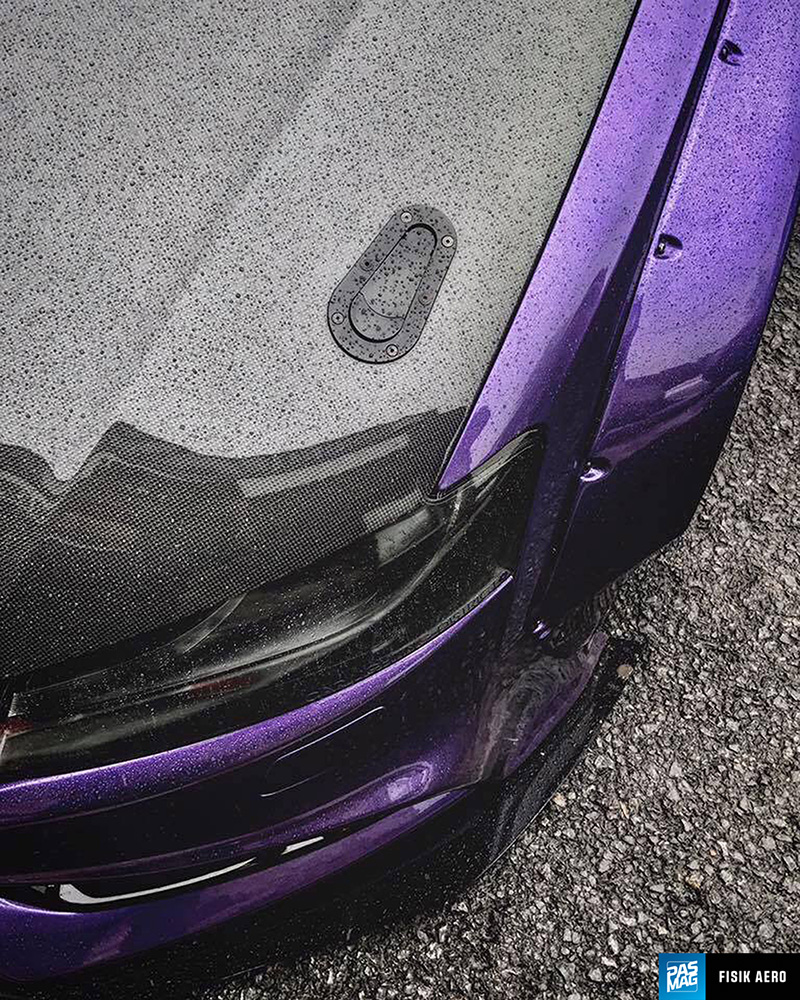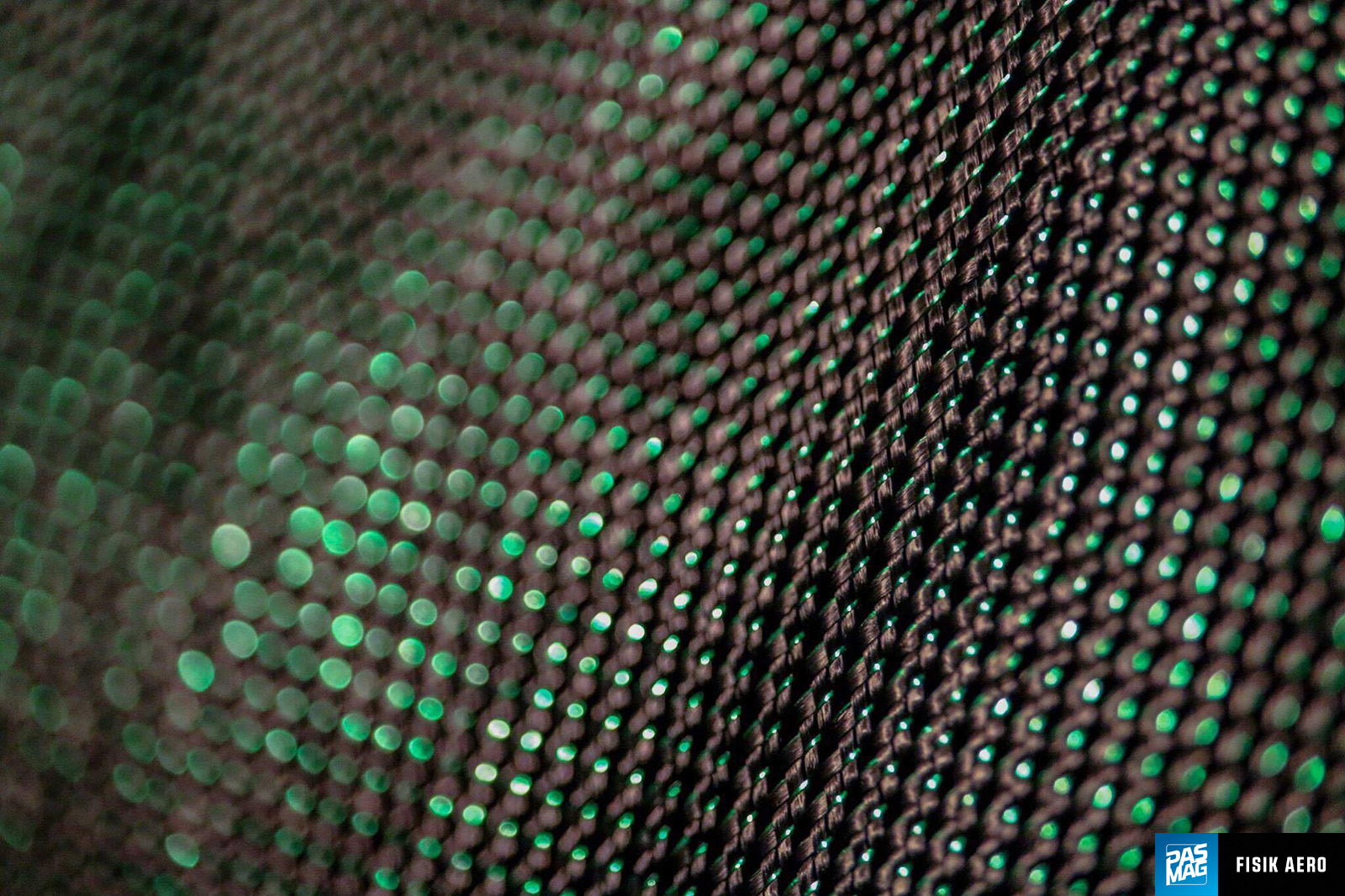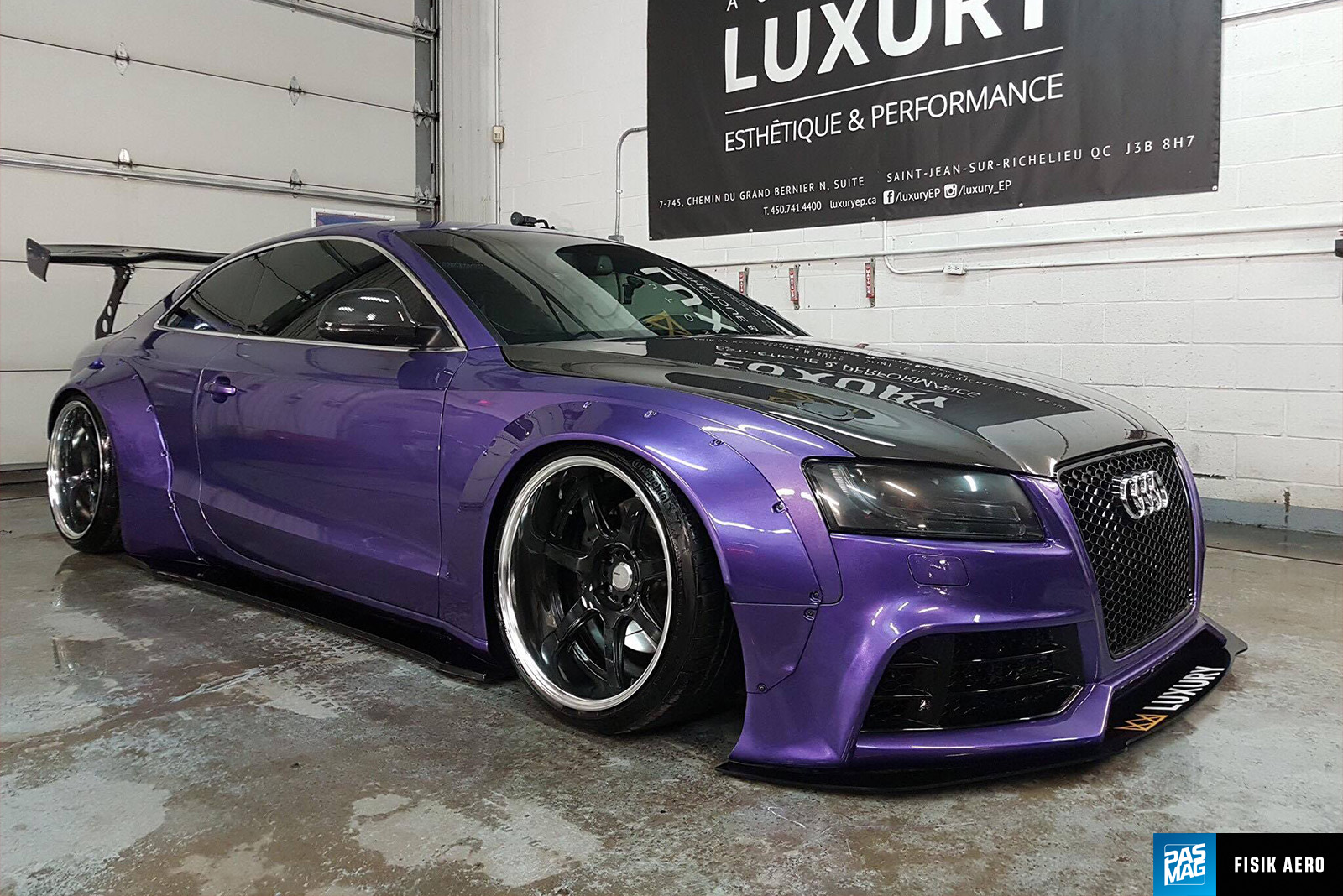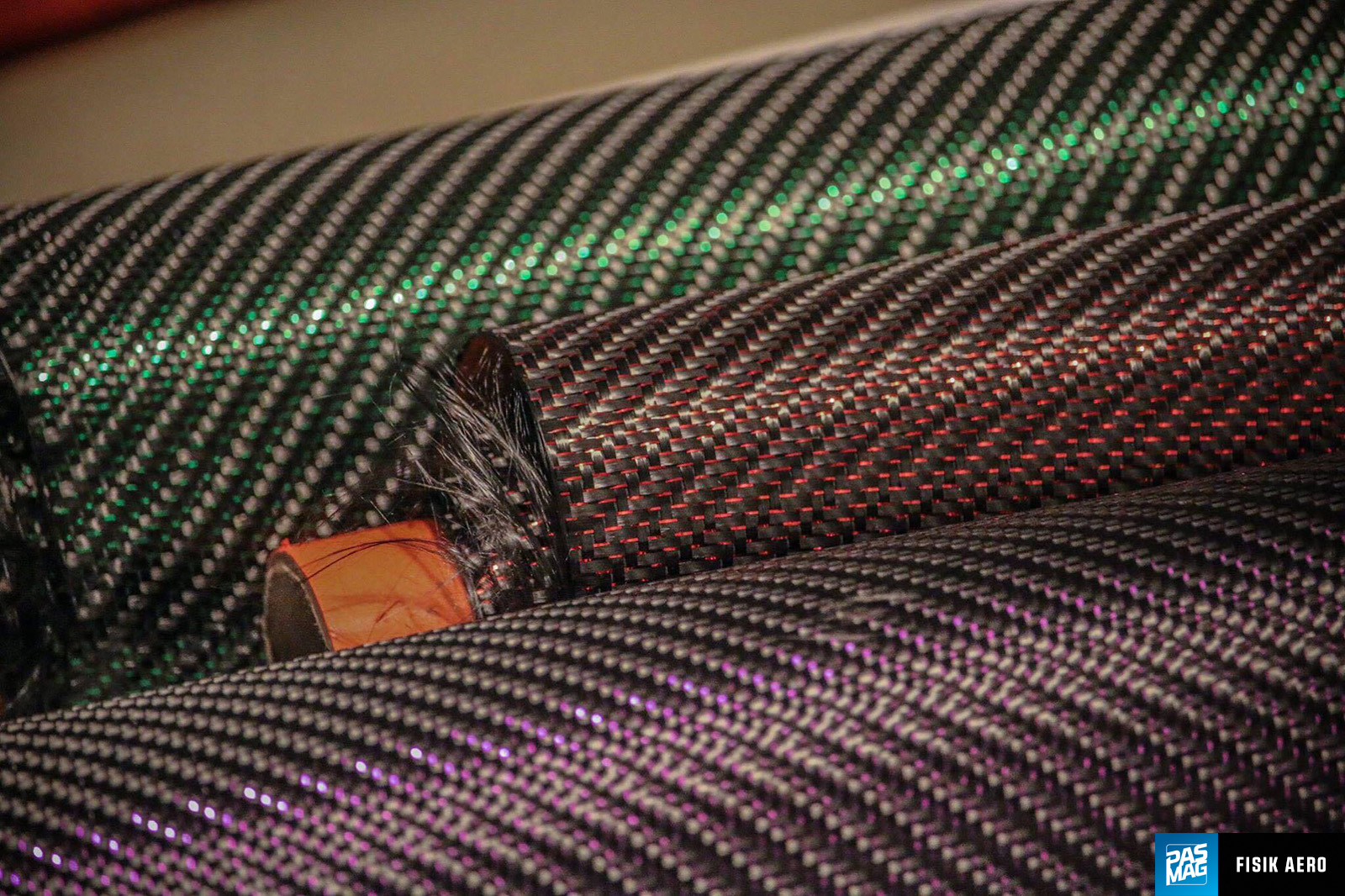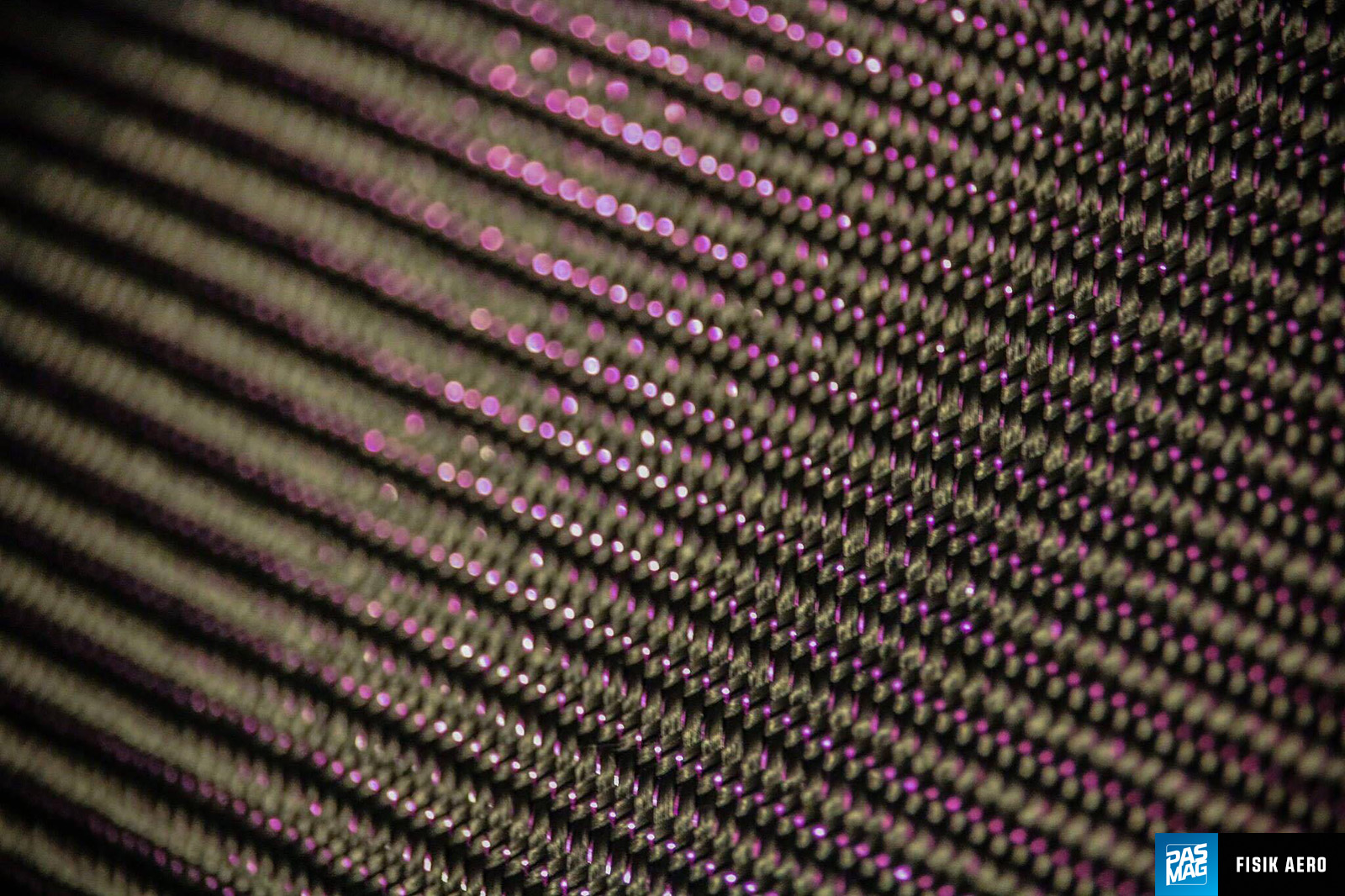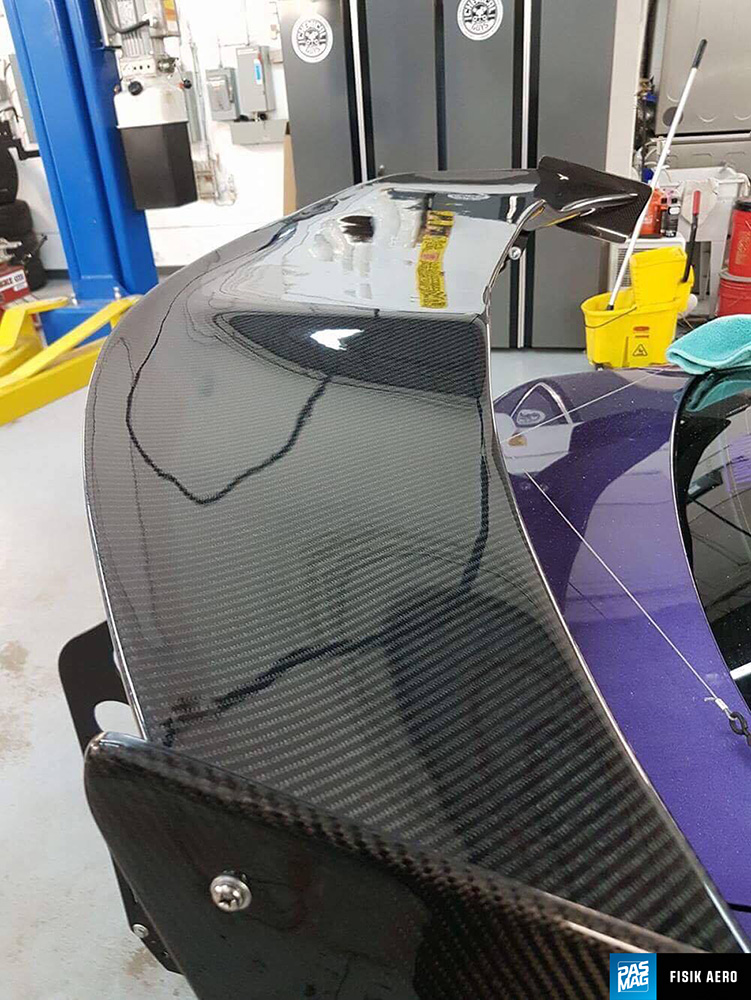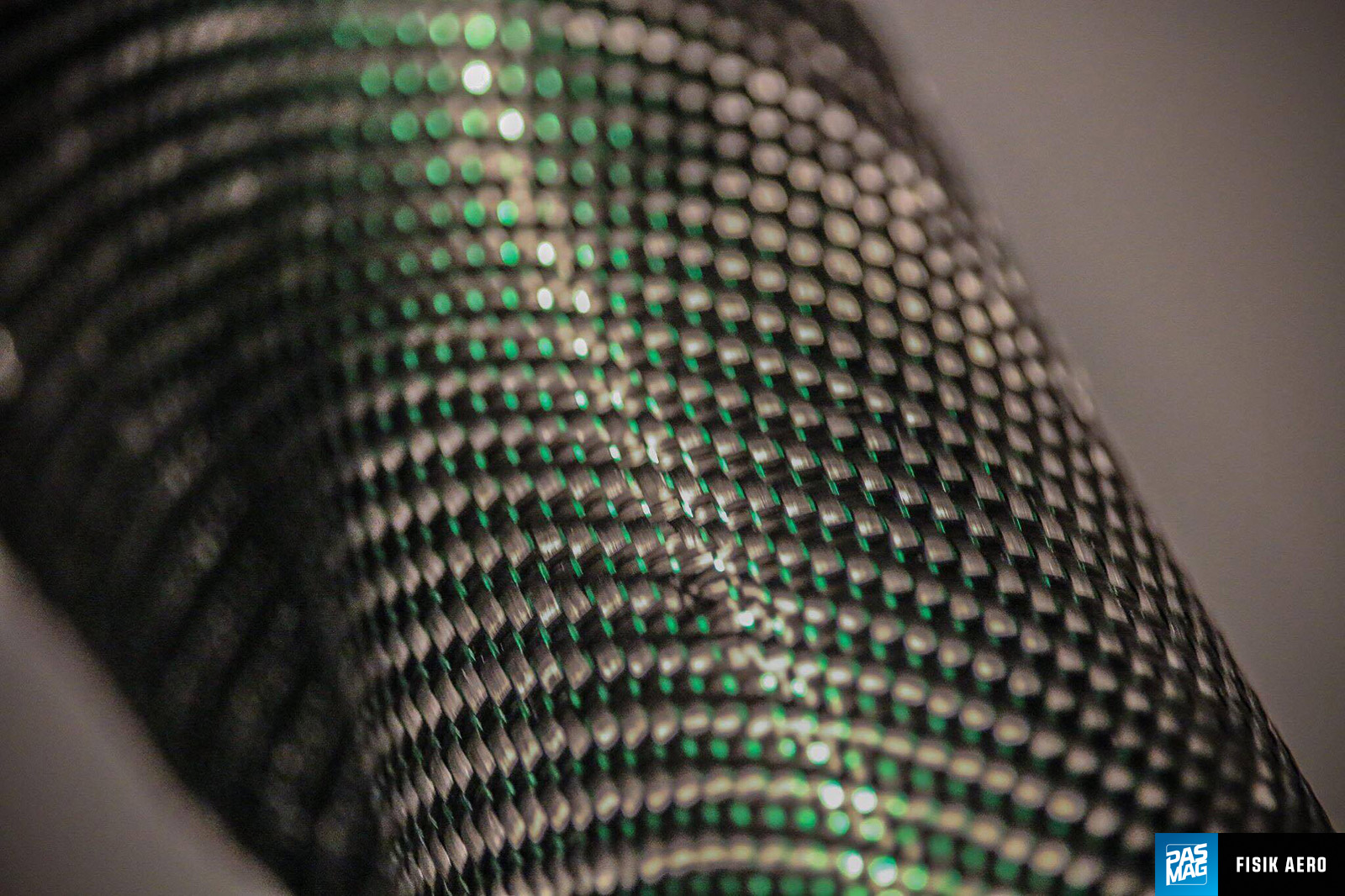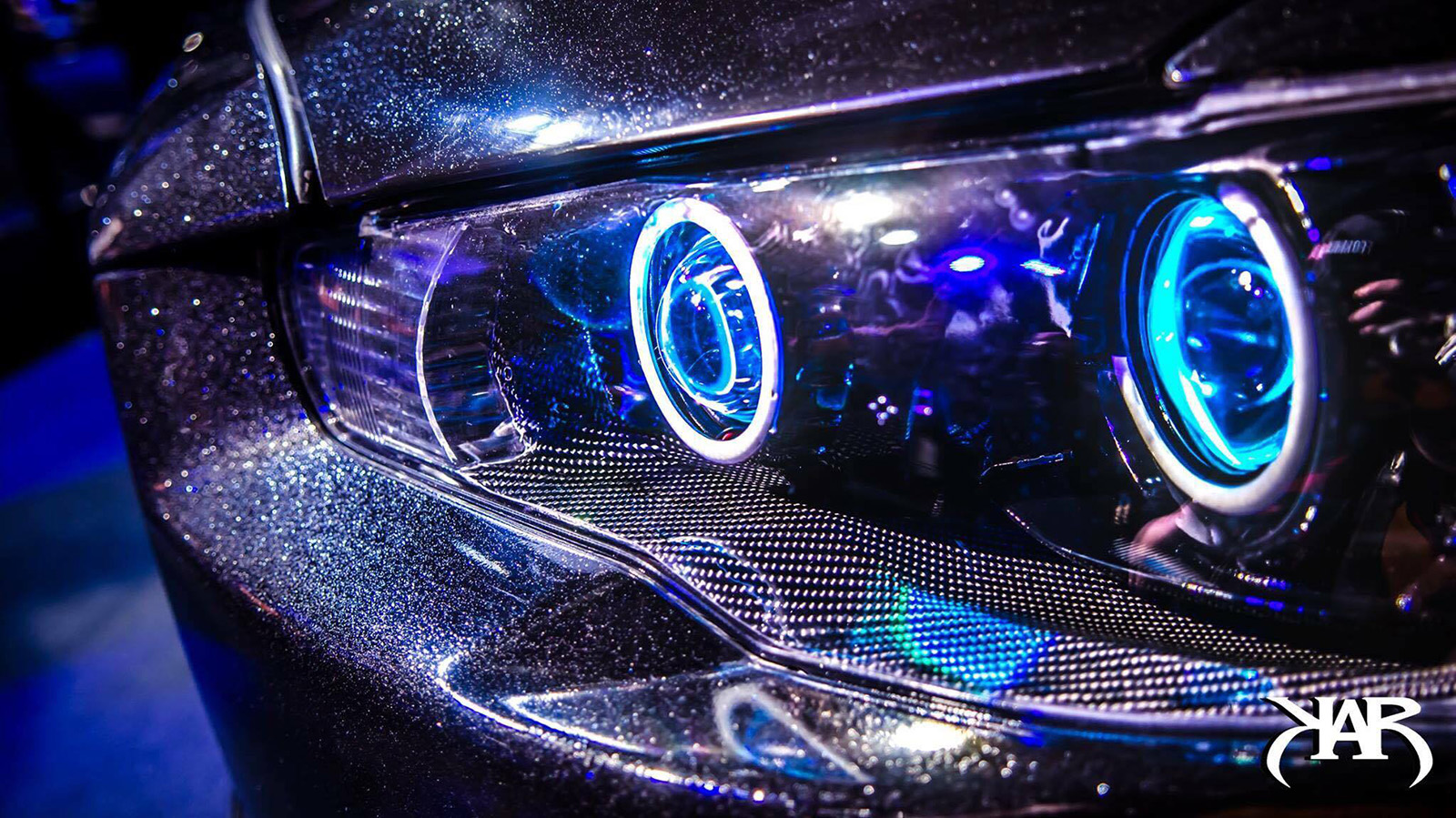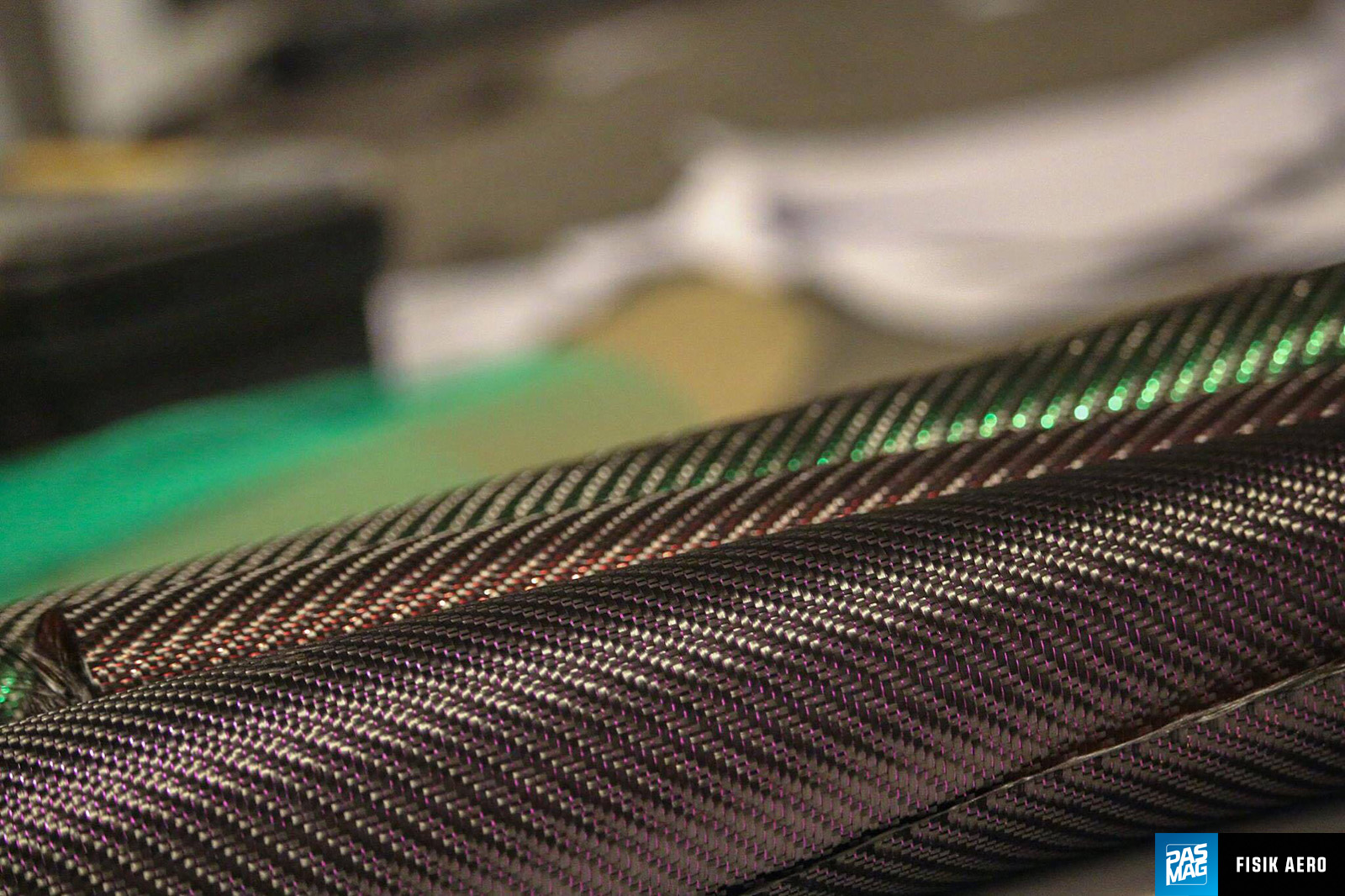Photography by Andrew Hoffman, KAR Photography, Benoit Mercier, PLRivard Photos
Whether you’re looking to reduce weight, improve aerodynamics and downforce, or just add a little flare to your ride, carbon fiber now has a wide array of uses. What was once an exclusive material that belonged solely to the aerospace industry, carbon fiber started making waves in motorsport, and then unsurprisingly trickled down to the automotive masses.
Through innovations in the production process, carbon fiber has become much more accessible to manufacturers and resellers, which has also led to many differing degrees of construction and quality that can lend to your build in different ways. So, how do you wade through all the different weaves and resins out there to find what’s good for you? Ask a pro, of course!
Will Giroux owns and operates FiSiK Aero out of Quebec, Canada, and makes aero parts out of just about any material you can, but his favorite remains carbon fiber. We figured he’d be the best to chat with, and did he ever have a lot to say! If you’re interested in making your car lighter, faster, and stronger, read on.
PAS: Tell me about the story behind FiSiK. How long have you been in the business of aerodynamic making parts for cars?
WG: The business was created in September 2016. I’ve had various experiences in the past in development, parts manufacturing and custom work and my high level of understanding of physics, I believe, makes us one of the best manufacturers on the market. It all started with my crazy ideas for custom parts for my own car, but a lot of people started being interested by those parts, and that’s how we gave birth to FiSiK Aero. Basically, a chassis-mount wing idea for a hatchback WRX and STI without losing the use of the hatch or having to bring tools to access the hatch, as well as enlarging the fenders of my car is what brought us to life.
Is there a meaning behind the word “FiSiK” in the company’s name?
FiSiK is a deviated word of “physic.” That word defines us because we do all our R&D in-house using only the best CAD and simulation software available on the market to ensure the best output and balance of all our parts, both for our off-the-shelf and our custom products.
What are the characteristics of carbon fiber that make it ideal for automotive use?
The most important of them all is tensile strength. It allows the part to be extremely strong when comparing it to some other material such as fiberglass or metal. When under dynamic load, it allows the part to keep its mechanical properties and shape, therefore allowing better results when in high stress situations, such as downforce created by a rear wing for example.
What should you look at when looking to buy a carbon fiber component?
Most important of all is the manufacturing process and material used during manufacturing. Manufacturing process is where the biggest difference will be made. It’s important to know there are various methods to produce composite products and all have their pros and cons. In the automotive sector, hand layout, vacuum bagging, resin injection, resin infusion and prepreg are the most popular methods used. To understand the difference between all these methods, we need to know the best ratio of fabric to resin range is between 40 and 50 percent. That means for 50 grams (1.8 ounces) of fabric, we will have between 40 and 50 grams (1.4 to 1.8 ounces) of resin. When going with a hand layout process, the manufacturer really has no control on the ratio, which can cause a product to be heavier and allows imperfections in the part, such as air bubbles and dry spots. I’d recommend to avoid this method at all costs!
Resin injection is similar to hand layout, but is done by machines. This is the most popular method used in China for their part manufacturing. It allows a fairly quick manufacturing process and batch production, but as with the hand layout, there is no real control on resin quantity and possible imperfections are still a thing. It’s a better option than hand layout, but I would still recommend to avoid this method if possible.
Vacuum bagging is a process that removes all air in the part, which minimizes imperfections and allows a better ratio by getting some of the excess resin out of the part. It is a way better manufacturing method than the other two, and is used by many smaller composite shops that don’t have access to larger equipment.
Resin infusion and prepreg are the best methods on the market. Both of them are similar in terms of results with only very small differences. Resin infusion is a process where fabrics are laid in a mold, and then put under vacuum. Resin is then allowed to flow into the part, replacing all of the air, which makes a perfectly finished part with the best mechanical properties possible. The ratio in such parts are in the 50 percent range. This method is used by most composite shops since it allows for greater quality control and minimal equipment requirements.
Prepreg means pre-impregnated. It’s a process using carbon fiber that is pre-impregnated with resin at a specific ratio. We have found 42 percent to be the best ratio here. The process requires the manufacturer to cut down the prepreg, stick it in the mold, vacuum bag it, and finally insert it in an autoclave. The autoclave is an expensive piece of equipment, which means only some manufacturers will use this manufacturing method, but it’s only one that allows us to manufacture a part at a very specific resin ratio. There are virtually no imperfections when using this method, and it also produces the best looking, lightest weight, and strongest parts. In-house, we use both infusion and prepreg for manufacturing, as both have their pros and cons, but our method of choice is prepreg for the best parts available on the market.
AUTOCLAVE
A specialized heat and pressure chamber that’s used to cure prepreg carbon fiber pieces.
Carbon fiber parts can get pretty pricey, so some enthusiasts will opt for a fiberglass (FRP) part instead. What are they missing out on if they go with FRP over CF? Is it a big deal?
To be honest, there is really no real answer to this as it really comes out to what the part is. Fiberglass is a bit heavier than carbon fiber, but the difference in automotive applications is very minimal. If the part requires a high level of strength, fiberglass is a far less viable option than carbon fiber. Some of the best examples are front splitters or a rear wing.
Let’s look at one of our most recent products: a chassis-mounted wing for an Audi S5 that produces 473 pounds of downforce at 120 mph. At that specific dynamic load, fiberglass would distort and transfer way less to the frame of the car, resulting in less downforce. When looking at front fenders though, there really is no real advantages to go with carbon fiber instead of fiberglass, other than the look and a very minimal weight saving.
Wet versus dry carbon: what are the pros and cons of each? When should you go for one over the other?
Well, to start with it is important to know the difference between both. Wet carbon is a term used to classify carbon fiber product manufactured using more resin than is really needed – more than 50 percent, usually. Those methods include hand layout, resin injection, and vacuum bagging in some cases. Dry carbon, on the other hand, is used to define carbon fiber parts made by resin infusion or prepreg. Certain vacuum-bagged parts can be classified as dry, too.
Wet parts are heavier than their counterparts and, most of the time, equals less quality control, higher defect rate, and a higher chance of having air bubbles, creating a void. It is way cheaper to produce than dry carbon fiber, and is the way to go for some people, but it’s important to understand the downsides of these parts. Dry carbon fiber parts, therefore, are best when it comes to weight reduction, rigidity, strength, and finish.
We often get asked why dry carbon fiber parts come in a matte finish. This is a concept that shouldn’t be linked to wet or dry carbon fiber, as both can be matte or glossy. It really comes down to how they are made in the mold, and truly has zero impact on the glossiness of a part. The exterior finish of a part does not have an effect on quality. I really would suggest you think twice before purchasing a product from a manufacturer claiming the matte finish of their product is due to the fact that it is dry carbon fiber. That’s 100-percent false.
Take me through the process of making a carbon fiber part at FiSiK Aero from start to finish. Do you use any techniques that are unique to your shop? How long does it take a make a product usually?
Let’s go through prepreg part manufacturing. Once the mold is done, we cut the prepreg material in the desired shape. Once cut, we lay them by hand in the mold to ensure perfect fitment, weave alignment, and ensure the plies of carbon are all perfectly placed in the mold. Depending on the part, we might include a Nomex core sandwiched between two plies to have the most rigid part possible while saving weight.
Once every part is laid in the mold, we stick a release film, breather cloth, and vacuum bagging film on top of the carbon fiber, and then put it under vacuum. When there is no more air in the bag, we perform a drop test to ensure there are absolutely zero leaks in the bagging system. Then it goes in our autoclave and is heated up to cure. Once the parts are fully cured, we trim the parts using our powerful rotary tools.
Next is a very strict inspection, followed by a light sanding using an orbital sander. We then bring them upstairs to the spray booth and spray them with our very own UV-resistant high-gloss topcoat to ensure the desired finish and look of our parts. The final step is wet sanding and polishing for a mirror-like finish.
The time it takes to do a part really depends on the method we use to manufacture it, the work needed, lead time and more. It can vary anywhere from 48 hours, all the way to 3 weeks depending on those factors.
NOMEX
Aerospace-grade aramid fiber (like Kevlar) that is constructed in a honeycomb configuration. Its light weight and high rigidity, plus its willingness to bond with resins, makes it a favorite among carbon fiber aero manufacturers.
Do different weaves make a difference in the end product? What are the best ones to look for when purchasing a carbon fiber product?
To say it doesn't would be lying, but explaining to a customer the whole process of choosing which weaves to use would have no end. There is no key to what is the best to use, but there are some factors to think of when manufacturing a product.
The key thing to understand is that the tighter the carbon is woven, the better it is, which means 1K carbon is stronger than 12K carbon. In automotive, the most popular weaving is 3K due to its incredible strength, accessible cost and beautiful look. Plain weaves are also stronger than twill weaves, but the difference is minor. Twill weaves also look better than plain weave and are the mostly used fiber weave on the market.
Both epoxy and polyester resin are used in the manufacturing of carbon fiber parts. Is one better than the other?
Yes, both are used by manufacturers, but one clearly is better than another. Epoxy can hold up to 2,000 pounds per square-inch, while polyester resin only can barely hold 500 pounds per square-inch. Epoxy also is way more resistant to wear, peeling, and cracking. It’s very important to know which resin has been used during the manufacturing process. Many manufacturers will use polyester resin on an expensive part, yet these parts don’t have that extra strength that can only provided by epoxy.
Do you have any tips or tricks in identifying fake carbon fiber parts or look-alikes?
Unfortunately, the only way to really find out would be to cut the part in half. But that’s probably not something you want to do. The only other way to know how a part is made is to ask the manufacturer or reseller. They must know how their parts are made and should be telling you exactly how. If they can’t or won’t, you shouldn’t be buying from them.
It’s also important to understand that many manufacturers selling “carbon fiber” parts are actually selling 25 percent carbon fiber and 75 percent fiberglass parts, and those cannot be compared to the real deal. Challenging the manufacturer to know the composition of their parts is perfectly acceptable. Be aware of cheap “carbon fiber” parts available on AliExpress, eBay, or other Chinese-dominated markets, as these parts are marketed as carbon fiber, but are the best examples of 25 to 75 percent ratio parts.
Is a part that is carbon fiber “skinned” still better than a regular FRP piece, or does that not make a difference?
When done correctly, yes, it is better. By skinning or fusing a layer of carbon fiber, you are adding the mechanical properties of carbon fiber to the part. It’s still far from being optimal for body panels, but perfectly fine for low stress parts, such as trims pieces and garnish.
Do colored carbon fibers have the same characteristics as regular carbon fiber? How is the color woven into the carbon fiber?
Colored carbon has exactly the same characteristics as regular carbon fiber. The color in colored carbon fiber is added by dying the fiber before weaving it into a fabric. This really doesn’t affect properties at all, and is purely cosmetic.
Colored carbon fibers are not the same as carbon-Kevlar parts however. Yes carbon-Kevalr is a different color, but that is a specific characteristic due to the mix of carbon and Kevlar.
Now that you’ve got a carbon buildup of knowledge, you can hunt down those woven beauties with confidence. If you’re at all interested in some of the magic FiSiK Aero does, you can check them out at fisikaero.co, or get some questions answered by sending them a message at This email address is being protected from spambots. You need JavaScript enabled to view it.. A huge thanks goes out to Will for taking the time to get us all up to speed!
Related Articles
 KW Releases V3s Compatible with BMW Air Suspension and EVs
KW Releases V3s Compatible with BMW Air Suspension and EVs
 What Should We Look For At SEMA 2025?
What Should We Look For At SEMA 2025?
 Air Lift Performance ALP4 - Next Level Air Suspension Management
Air Lift Performance ALP4 - Next Level Air Suspension Management
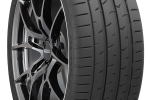 Toyo Tires Canada Introduces Toyo Proxes Sport 2 Max Performance Summer Tire
Toyo Tires Canada Introduces Toyo Proxes Sport 2 Max Performance Summer Tire
 Toyo Tires New Proxes Sport A/S+ Ultra-High Performance All-Season Tire
Toyo Tires New Proxes Sport A/S+ Ultra-High Performance All-Season Tire
 From Ordinary to Extraordinary: Jaiden Zheng's Liberty Walked E92 M3
From Ordinary to Extraordinary: Jaiden Zheng's Liberty Walked E92 M3


